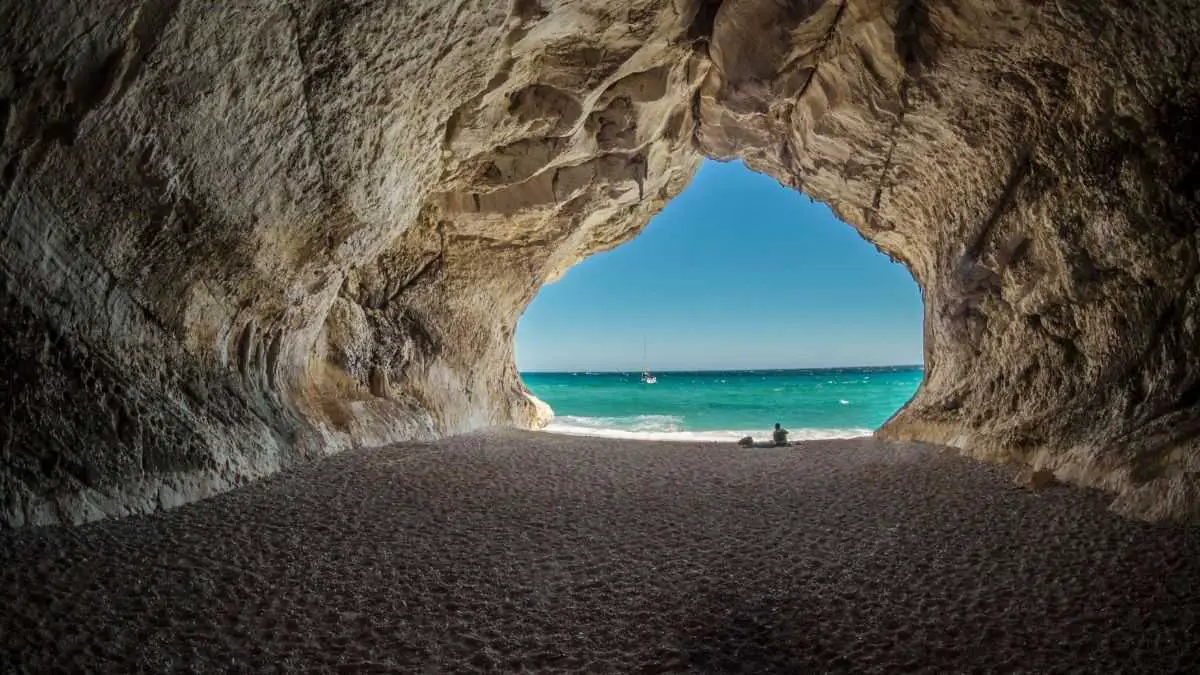Types of caves: Caves are formed due to wind or water erosion (or other natural force) of rocky surfaces found in different types of terrain. For example, you can find different cave types in deserts, high mountains, glaciers, or karst landscapes.
Contents
How Are Caves Formed?
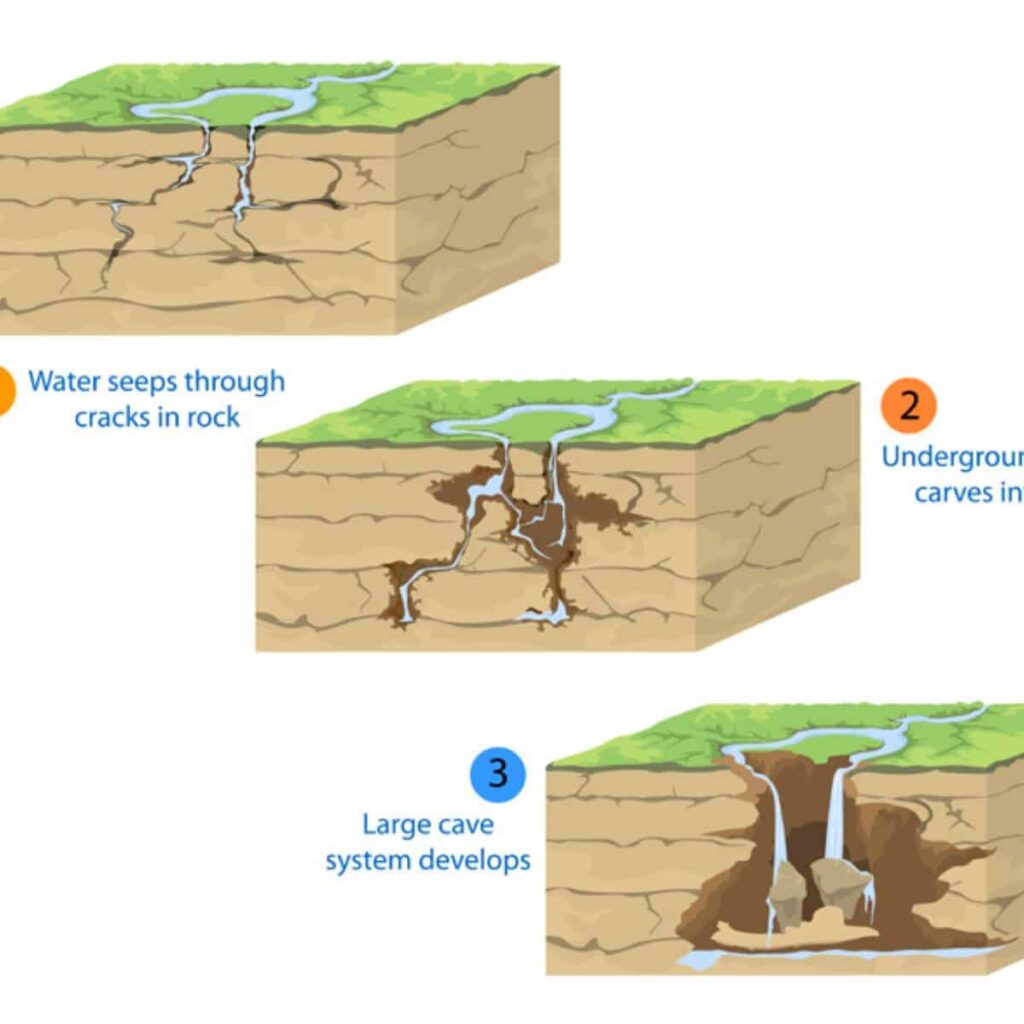
Caves form due to natural erosion. For example, the dissolving of bedrock through attrition by underground water. When water leaks through cracks in rocks, it gradually carves into them and forms large cave systems.
The three main characteristics of caves are:
- they form naturally;
- they are large enough for a person to enter;
- they extend deep into the surface beyond the reach of sunlight.
What Are The Main Types of Caves?
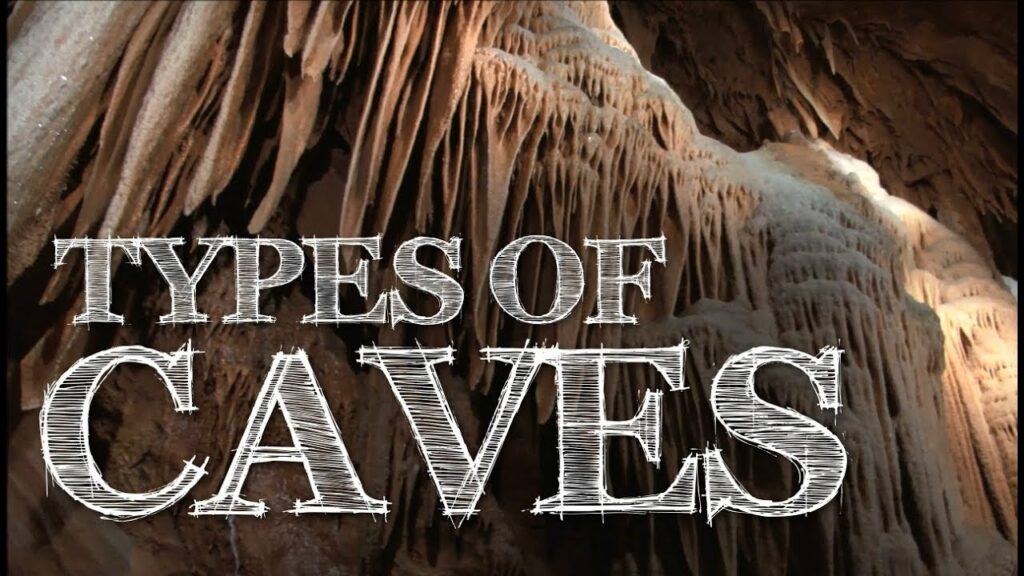
The most common kind of caves are those found in karst landscapes, and they are also the most visited caves due to their expansive interiors. Here are the seven main types of caves:
Glacier Caves
When water formed by the melting snow and ice (meltwater) unearths drainage tunnels through the ice in a glacier, it can create a cave.
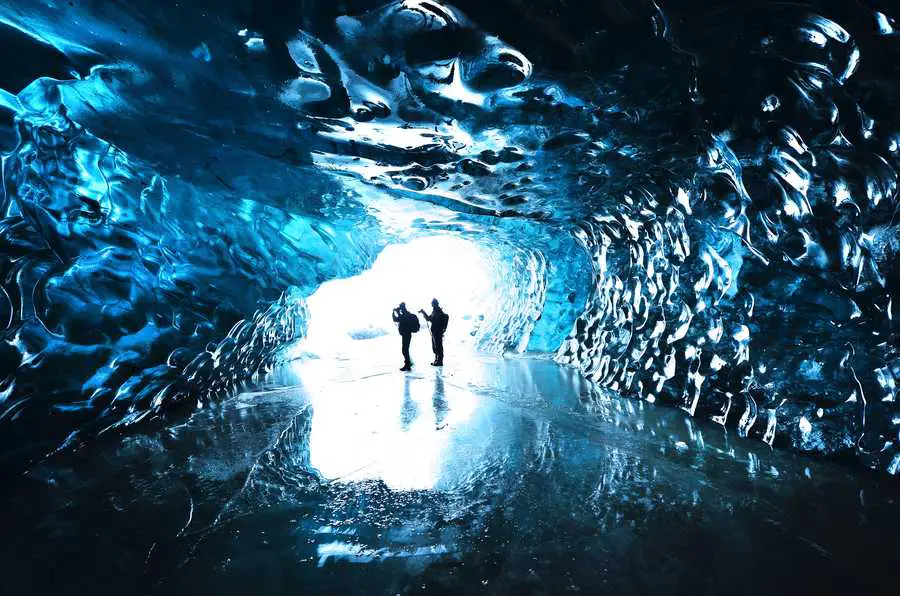
The Kverkfjöll glacier cave in the Vatnajökull glacier in Iceland is an example of a glacier cave.
Solution Caves
These types of caves form in limestone, salt, chalk, marble, gypsum, etc. (carbonate rocks or sulfate rocks). These kinds of caves form when groundwater erodes the rock’s surface and forms tunnels.
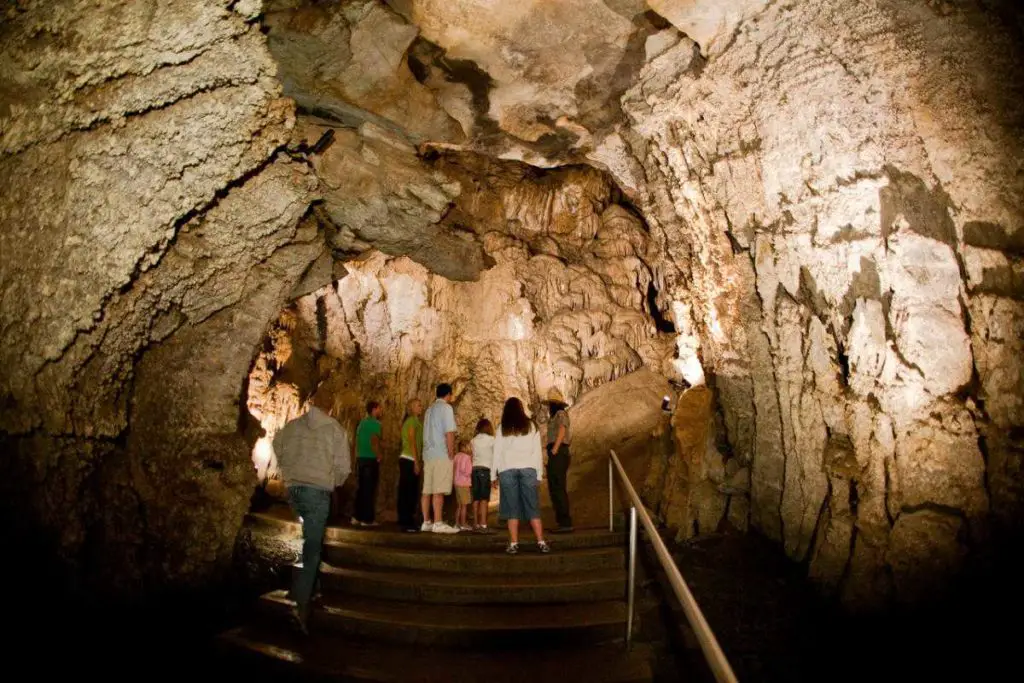
Most caves and, the largest caves, are usually solution caves. They are also known as karst caves. An example of a solution cave is the Timpanogos Cave in Utah.
Lava Cave
Lava caves, as the name implies, form through volcanic activity. When magma rises to the surface, becoming lava, and flows down a volcano’s slopes it cools and solidifies.
However, beneath the solidified surface, lava continues to flow. When it finally stops flowing it leaves behind hollow tubes. These types of caves are known as lava tubes.
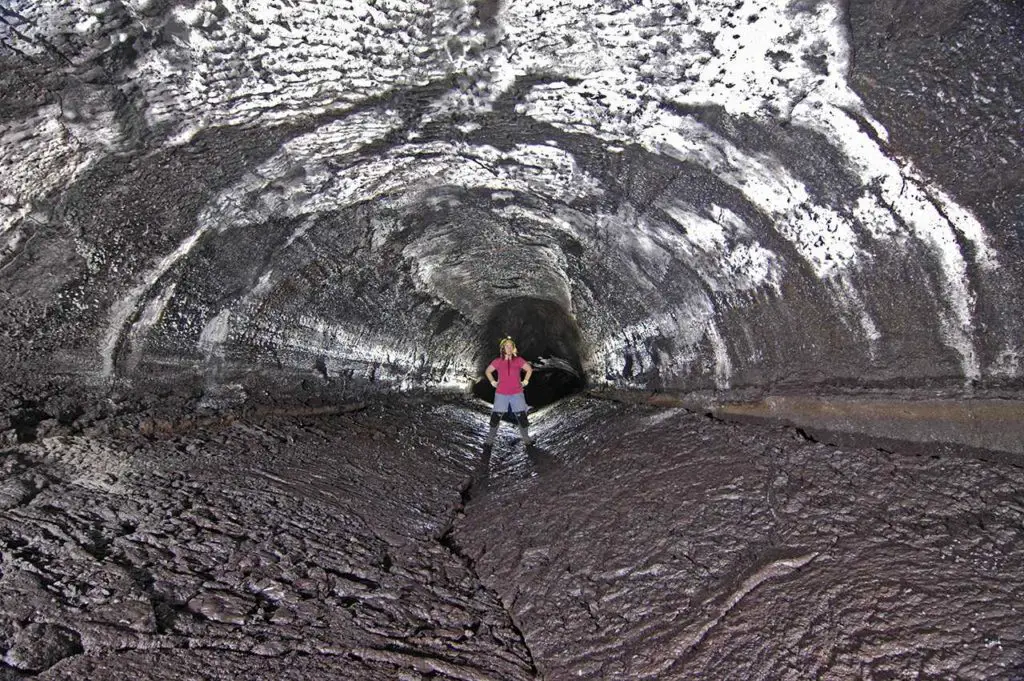
The Kazumura Cave in Hawaii is an example of a 40.7-mile long lava tube. Other types of caves formed by volcanic activity include lava mold caves, rift caves, inflationary caves, and volcanic conduits.
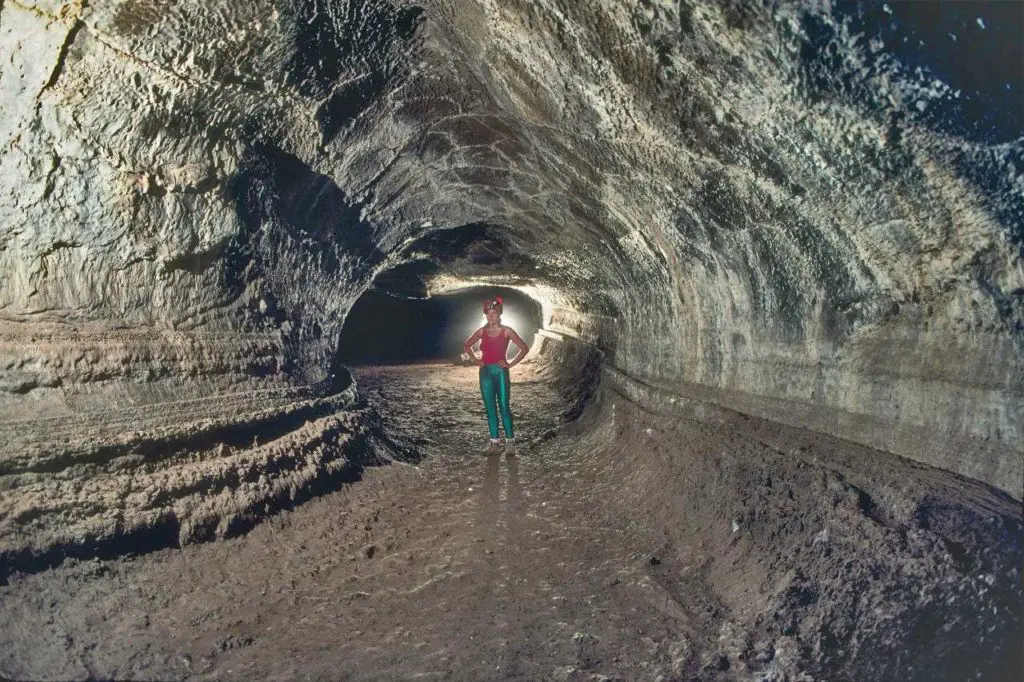
Ice Caves
You might be thinking that an ice cave is related to a glacier cave or is, in fact, a type of glacier cave but they are not.
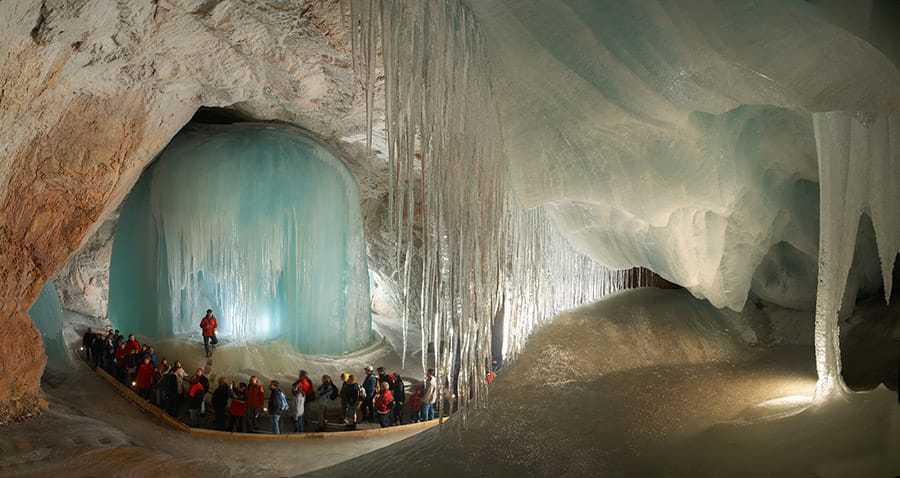
Ice caves are usually solution caves or lava caves where ice forms and remains all year round. The Eisriesenwelt, in Austria, is an example of an ice cave. It is also the largest ice cave in the world.
Sea Caves
As waves from the ocean erode rock (bedrock) on the coastline or seashore, eventually, they form caves.

Some sea caves are but small crevices and can only be accessed by boat. For example, the Blue Grotto in Italy.
Others are vast and can be found along beaches. An example is Fingal’s Cave in Scotland.
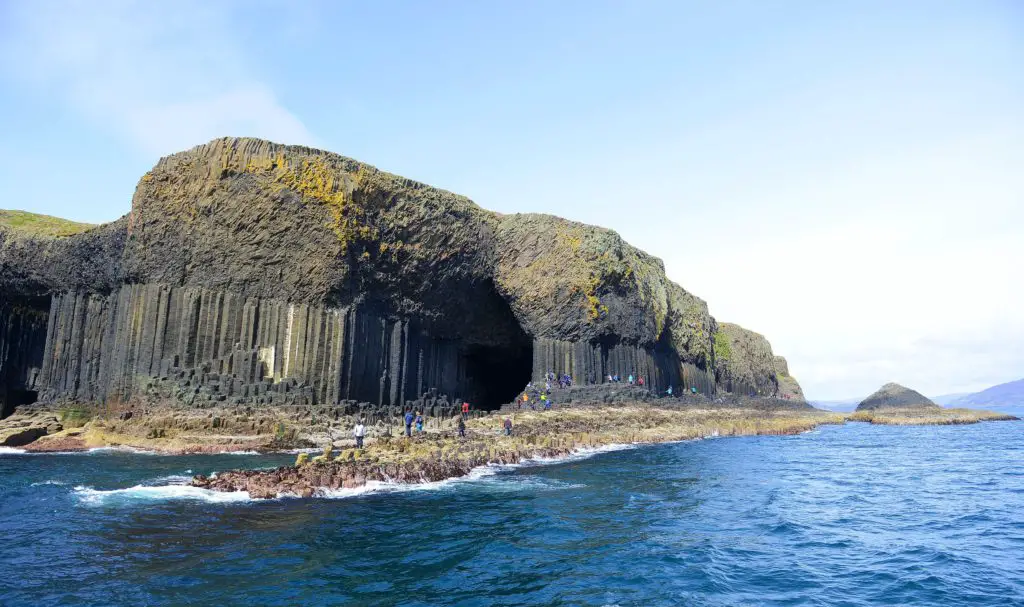
Eolian Caves
Eolian caves are shallow caves formed when wind blasts silt or fine sand against a rock face. These types of caves are rarely longer than a few tens of meters.
Sandstone Caves
Sandstone caves or rock shelters form when erosion of insoluble rocks takes place. For example, a resistant rock such as a sandstone overlies some other relatively weak rock (like shale).
Surface weathering or stream action erodes the shale, diminishing it into the hillside. Eventually, the sandstone is all that’s as a cover to the rock shelter.
Talus Caves
Talus caves are openings created between rocks stacked up on mountain slopes. Most of them are tiny both in length and in cross-section.
What Is The Biggest Cave In The World?
Son Doong, located in Central Vietnam, in the heart of the Phong Nha Ke Bang National Park, is the biggest cave in the world. Son Doong is the largest cave in the world, based on volume.
What Are The 5 Biggest Caves In The World?
10 Largest Caves In The World, Ranked By Size:
- Son Doong Cave, Vietnam.
- Mammoth Cave, Kentucky.
- Sistema Dos Ojos, Mexico.
- Jewel Cave, South Dakota.
- Sistema Ox Bel Ha, Mexico.
- Optymistychna Cave, Ukraine.
- Shuanghedong Cave Network, China.
- Wind Cave, South Dakota.
- Lechuguilla Cave, New Mexico
- Clearwater Cave System, Malaysia
References:
- Cave – Wikipedia – https://en.wikipedia.org/wiki/Cave
- https://www.zmescience.com/science/geology/the-types-of-caves/
- Geology of Caves – USGS Publications Repository – https://pubs.usgs.gov/gip/7000072/report.pdf
- cave | Definition, Formation, Types, & Facts | Britannica – https://www.britannica.com/science/cave
- Geology of Caves – https://scienceviews.com/geology/caves.html
- Caves, Information and Facts | National Geographic – https://www.nationalgeographic.com/science/article/caves
- Cave Types, Cave Environment And Formations, Cave Life – https://science.jrank.org/pages/1289/Cave.html
- Lava Tube Caves – https://www.showcaves.com/english/explain/Speleology/LavaTube.html
